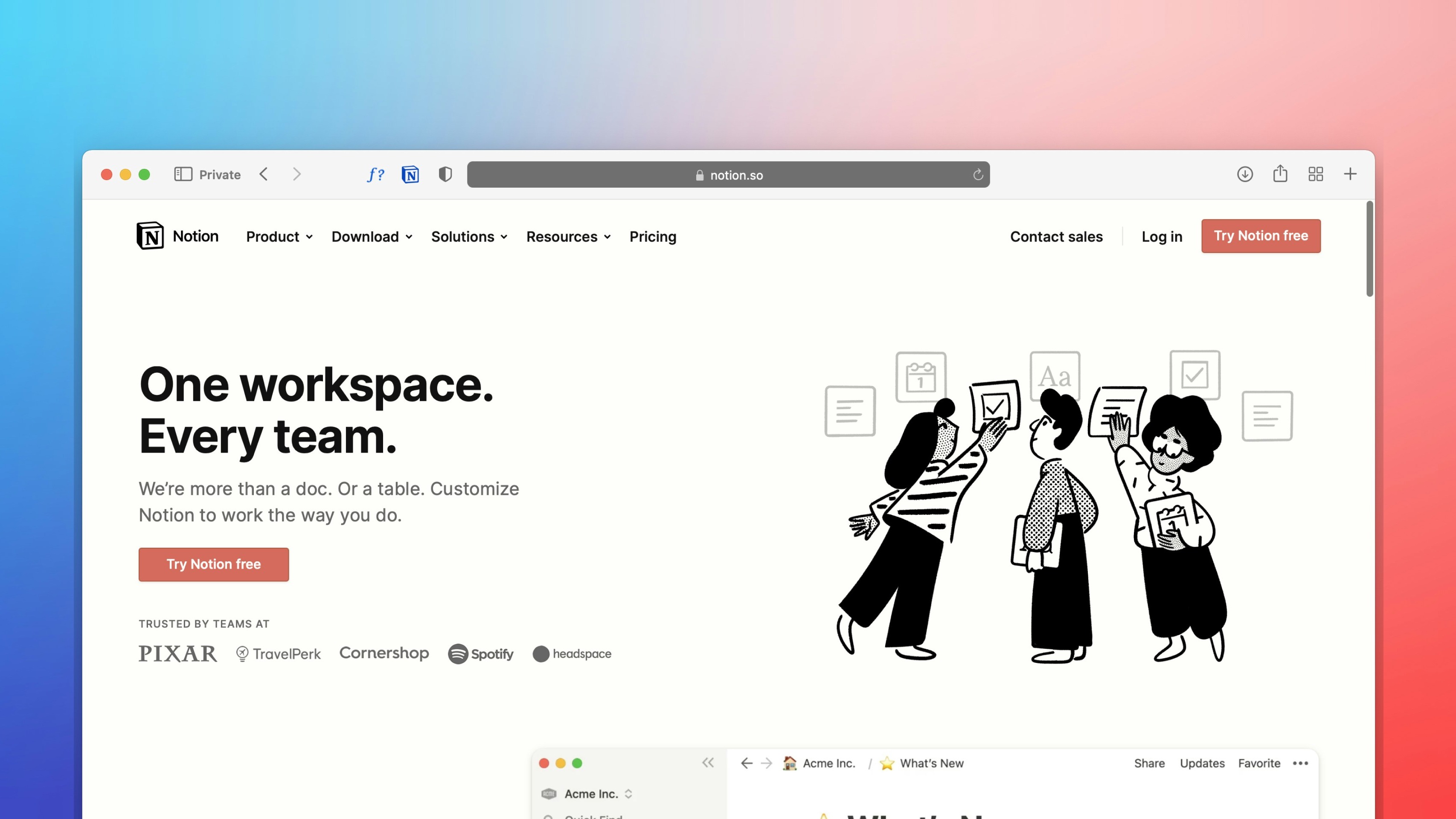 Freelancer tips
Freelancer tips Notion: What It Is, What It’s For, and How to Use It in Your Daily Life
Want to better organize your life and work? Notion can help boost your productivity. Click here to discover what this software is and what it’s used for.



Invoicing might not be the most exciting part of freelancing, but it's absolutely crucial for keeping your business running smoothly.
A professional invoice isn’t just a formality — it's how you make sure you get timely payments and maintain strong client relationships.
When done right, it can save you from payment delays and potential misunderstandings.
In this guide, we’ll break down the essentials of writing and customizing your invoices in a way that’s clear and easy to follow.
We’ll cover the key components you need, share practical tips for creating effective invoices, and provide you with ready-to-use templates to streamline the process.
By the end, you'll be equipped to send out invoices that not only look professional but also help you get paid faster.
Absolutely, as a freelancer, you can — and should — create your own invoices.
In fact, managing your invoicing effectively is a key part of running a successful freelance business.
Here’s why professional invoicing is so important:
Builds trust: A well-designed, clear invoice demonstrates your professionalism and helps build trust with your clients. When your invoices are easy to read and include all the necessary details, clients are more likely to view you as a serious and reliable professional.
Ensures timely payments: Invoices are your formal request for payment, and a detailed invoice helps avoid confusion or delays. By specifying exactly what services were provided and how much is owed, you set clear expectations for when and how you'll be paid. This can significantly improve your cash flow and reduce the likelihood of payment delays.
Legal and tax compliance: Accurate invoicing is crucial for keeping your financial records in order. It provides a clear paper trail of your earnings, which is essential for tax purposes. Having detailed invoices helps you track your income, file taxes correctly, and stay compliant with legal requirements.
Professional image: Sending well-crafted invoices contributes to a polished, professional image. It shows clients that you are organized and serious about your business, which can lead to more opportunities and referrals.
Reinforces clear communication: Invoices provide a formal record of what was agreed upon. This clarity helps prevent misunderstandings about the scope of work, pricing, and payment terms, ensuring both you and your client are on the same page.
More efficient record-keeping: Invoices help you keep track of your financial transactions systematically. They provide a detailed history of your work and payments, which can be invaluable for budgeting, forecasting, and financial planning.
Creating a freelancer commercial invoice might seem daunting at first, but it’s a straightforward process once you understand the key components and steps involved.
Choose your template: Many tools and software offer customizable templates, or you can create one from scratch. Look for templates that are clean, professional, and easy to customize.
Fill in your information: Enter your contact details and your client’s information into the template. Make sure to include the invoice number, date, and due date. Customizing these fields ensures each invoice is specific to the transaction.
Add service descriptions and rates: Input a detailed description of the services you provided along with the associated rates. Be accurate and thorough in your descriptions to avoid any misunderstandings. Calculate the total amount due, including any applicable taxes.
Review and send: Before sending, double-check all the details. Ensure that your contact information, client details, service descriptions, and totals are correct. Look for any typos or errors. Once everything is accurate, send the invoice to your client, and keep a copy for your records.
There are some essentials to include in your freelancing invoice, to avoid any delays or miscommunication, and to make sure you get paid as quickly as possible:
Your contact information: Name, address, and contact details.
Client’s contact information: Company name, address, and contact person.
Invoice number: You can use a simple system, like #0001, #0002, etc. Or, to help with your own reporting and accounting, you can include your client’s initials. For example, if you were invoicing Apple, your invoice number could be #001-APP.
Invoice date: The date you issue the invoice.
Payment due date: Clearly state when payment is expected.
Description of services: Detailed description of the work done.
Rates and totals: Breaking down the cost of each component of the work and providing the total.
Currency: If you work with international clients, specify the currency in which the payment is expected. For example, USD, EUR, GBP, etc.
How you want the payment to be made: Via bank transfer, PayPal, or on your website, if you have one.
Payment terms: Including how long they have to make the payment (7 days, 14 days, or 28 days are usually the norm), whether you charge late fees beyond that time, and any discounts for early payment.
Additional notes: Any relevant information or instructions for the client, such as the licensing information for the work completed. It’s also polite to include a thank you note to your client, or any information on future work — because why not promote your services everywhere you can?!
Creating a freelancer invoice from scratch can be time-consuming and a bit overwhelming, especially if you’re just getting started.
That’s where invoice templates come in handy, with ready-made, professional formats that you can easily customize with your details.
To get you started, here are our favorite free invoice templates for freelancers:





Invoicing as a freelancer is a critical component of managing your business finances effectively.
Here are some practical tips to help you create invoices that are professional, accurate, and more likely to be paid on time:
Keep it simple: Avoid overcomplicating your invoice layout.
Be clear and concise: Ensure that all details are easy to understand.
Use consistent branding: Once you’ve chosen an invoicing template, stick to it.
Include as much information as you can: Even if a certain client doesn’t need information like your IBAN number or your email address, it’s best to include too much information than not enough.
Make it personal: Adding a thank you note at the bottom of an invoice is your way of showing your personality — it’s one of the reasons why your clients choose to work with you, and it’s part of your personal brand!
Use a template: Rather than creating your invoice from scratch each time, you can speed up your invoicing with a template.
Double-check your totals and rates: It’s better to double-check for any incorrect calculations than go back to your client saying you made an error.
Invoicing is more than just a formality; it's a vital part of your freelance business that underscores your professionalism, ensures timely payments, and keeps your financial records in order.
Using well-designed invoice templates can significantly streamline this process, ensuring that every invoice you send out maintains a high standard of clarity and professionalism.
But when dealing with clients outside of Mexico, managing currency exchange and getting the best rates can often be a challenge.
Here’s where DolarApp can help, allowing you to access real-time exchange rates and ensuring that you receive the best conversion rates for payments in foreign currencies — so you can maximize your earnings.
So embrace these tools and tips to transform your invoicing from a mere routine into a strategic advantage for your freelance business, helping you stay organized, get paid promptly, and build lasting professional relationships.

The world has borders. Your finances don’t have to.
 Freelancer tips
Freelancer tips Want to better organize your life and work? Notion can help boost your productivity. Click here to discover what this software is and what it’s used for.

 Freelancer tips
Freelancer tips Project chaos? Learn how Trello can help you organize tasks and improve your productivity.

 Freelancer tips
Freelancer tips ClickUp can make any freelancer more productive. Discover what it is, how it works, and the advantages this tool offers you


